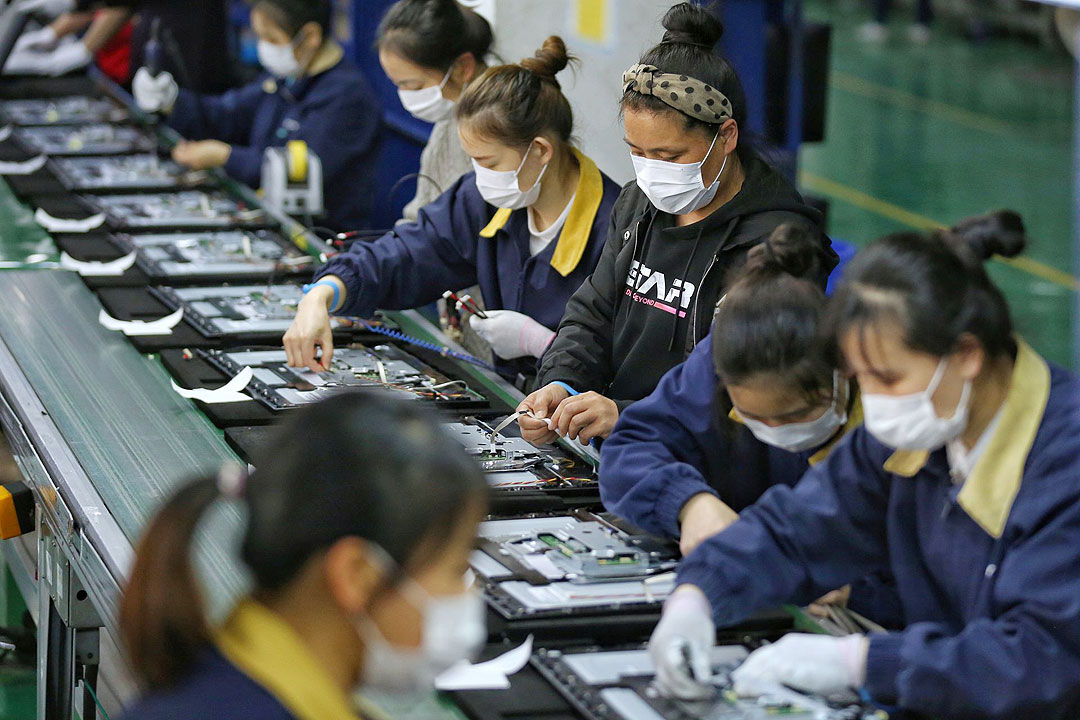FACTORY OUTPUT rose for a sixth consecutive month in September in step with the recovering economy, according to the Philippine Statistics Authority (PSA).
According to the preliminary results of the PSA’s Monthly Integrated Survey of Selected Industries report released Tuesday, the volume of production index (VoPI) rose 124% year on year in September. It was weaker than the revised August growth rate of 533.6%, but represents a turnaround from the 56.7% contraction in September 2020.
The value of production index (VaPI) rose 122.7%, slowing from the 527.3% growth rate posted in August. A year earlier, VaPI contracted 59%.
In the year to date, factory output growth averaged 65.8% and 59.4% for VoPI and VaPI, respectively.
The PSA said VoPI was boosted by expansion in 13 industrial categories, led by coke and refined petroleum products, which rose 739.7%; fabricated metal products except machinery and equipment (up 182.5%), and wood, bamboo, cane, rattan articles and related products (up 48.7%).
The average capacity utilization rate for manufacturing was 66.5% in September, against 66.2% in August.
“There were 20 out of 22 industry divisions with more than 50% average capacity utilization rate, led by manufacture of furniture (85.0%), manufacture of other non-metallic mineral products (81.0%), and manufacture of tobacco products (79.0%),” PSA said.
IHS Markit’s Philippines Manufacturing Purchasing Managers’ Index (PMI) for September expanded to 50.9 from 46.4 in August as the government announced a more relaxed quarantine in the National Capital Region (NCR).
The PMI rose further to 51 in October amid improving business confidence on further easing of mobility rules in the capital.
A PMI reading above 50 signals increased manufacturing activity, as the index tracks the activity reported by purchasing managers, which is a leading indicator. Their orders herald the movement of goods that will be converted from raw materials to finished products. A reading below 50 means purchasing, and by extension manufacturing, is due to decline.
Cid L. Terosa, a senior economist at University of Asia and the Pacific School of Economics, said in an e-mail interview that the increase in factory output was expected.
“The year-on-year increase in the volume and value of production in September 2021 was expected because quarantine conditions this year were more relaxed than the same month last year. More manufacturing firms have reported 70-100% capacity utilization in September,” Mr. Terosa said.
“The growth of both volume and value of production in September 2021 was slower than in August 2021 partly because manufacturing firms were adjusting to a new localized lockdown system. The NCR was placed under modified enhanced community quarantine towards the end of August 2021, and this could have affected production plans and activities for September 2021,” he added.
Rizal Commercial Banking Corp. Chief Economist Michael L. Ricafort said in an e-mail interview that factory output will begin to normalize as the economy reopens.
“The year-on-year growth will start to normalize starting September 2021 as the low year-earlier base months run their course. The growth is magnified by the further reopening of the economy, especially after the hard lockdowns a year ago,” Mr. Ricafort said.
“Any year-on-year growth in manufacturing becomes massive amid measures to further re-open the economy from lockdowns,” he added.
Mr. Terosa is expecting a continuous increase in production as the holiday season approaches.
“I expect both year-on-year volume and value of production to register positive growth from October until December 2021 because greater mobility among consumers can drive demand, perk up markets, and invigorate manufacturing activity,” Mr. Terosa said.
“Also, I expect manufacturing activity to continue its upward trajectory since the Christmas season this year will probably be more conducive to greater consumer spending,” he added.
Mr. Ricafort sees manufacturing picking up following the further reopening of the economy, particularly in the NCR.
“The Christmas season… accounts for a large share of sales for many businesses/industries,” he said, adding that he sees increased spending “as part of the preparations for the May 2022 elections,” Mr. Ricafort said.
“Essential manufacturing (companies) continued to operate, both domestic and export-oriented… thereby minimizing the disruptions on manufacturing activity and sustaining the recovery in manufacturing output,” he added. — Revin Mikhael D. Ochave
